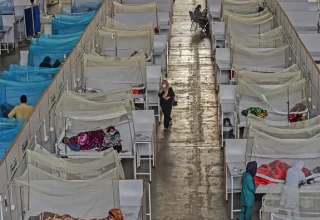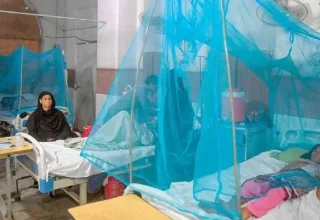
According to a modeling study published in the Lancet Rheumatology journal, more than 840 million people worldwide will suffer from back pain by 2050, largely due to population growth and aging.
Researchers analyzed more than 30 years of data to show that the back pain landscape continues to change, with the largest increases in Asia and Africa. The lack of a consistent approach to treating back pain and the limited treatment options researchers worry will lead to a health care crisis, as low back pain is the world’s leading cause of disability, they said.
Professor Manuela Ferreira of the University of Sydney, Australia, said: “Our analysis paints a picture of the increasing incidence of back pain worldwide, which is putting enormous pressure on our healthcare system.” “We need to establish a national, consistent approach to low back pain management that is informed by research,” Ferreira said in a statement.
Studies show that as of 2017, more than half a billion people suffer from low back pain. In 2020, there were approximately 619 million cases of back pain. At least one-third of the burden of disability associated with backpain is attributed to occupational factors, smoking and overweight.
A widespread misconception is that low back pain mostly affects adults of working age. However, the researchers said this study confirmed that low back pain is more common in older people. Women also have a higher incidence of low back pain than men, they said.
The study analyzed Global Burden of Disease (GBD) data from 1990 to 2020 from more than 204 countries and territories to map the back pain landscape over time. The GBD is the most comprehensive picture of mortality and disability by country, time and age.
“Health systems need to respond to this huge and growing burden of low back pain that is affecting people worldwide,” said Professor Anthony Wolff, co-chair of the Global Alliance for Musculoskeletal Health which called for prioritizing tackling the growing problem. Understanding musculoskeletal conditions. “More needs to be done to prevent low back pain and ensure timely access to care, because there are effective ways to help people with pain,” Wolff said.
In 2018, experts expressed their concerns in The Lancet journal and recommended changes in global policy, especially exercise and education, on the best way to prevent and manage low back pain to stop the rise of inappropriate treatment.
However, since then, little has changed. Common treatments recommended for low back pain have been shown to be of unknown efficacy or ineffective some of which include surgery and opioids, the researchers said.
Ferreira says there is a lack of consistency in how health professionals manage back pain and how the health care system needs to adapt.” It may come as a surprise to some that current clinical guidelines do not provide specific recommendations for the treatment and management of back pain. Older adults people,” the researcher added.




































